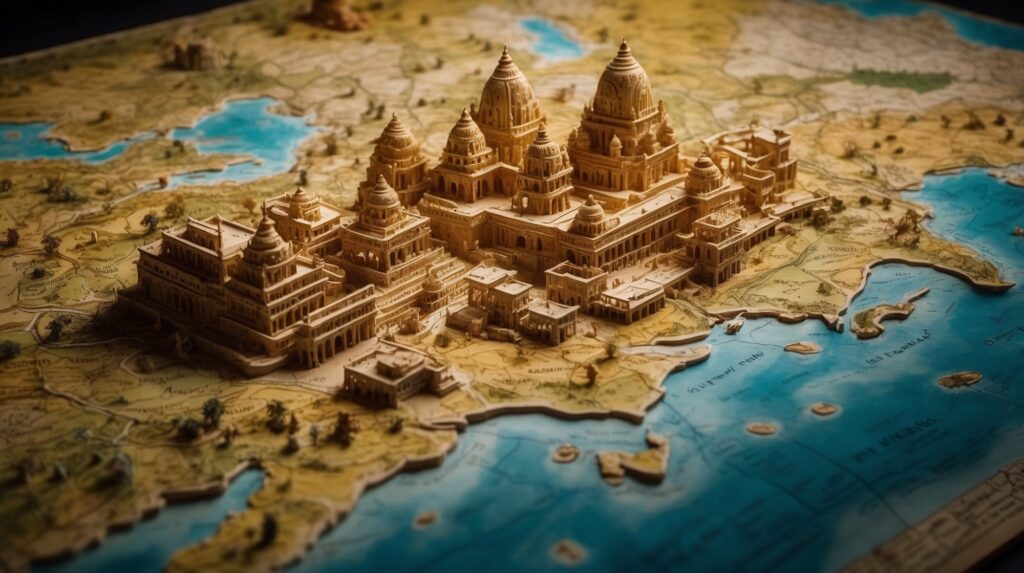In an era where attention spans are shrinking and digital distractions are multiplying, history education faces unprecedented challenges. Traditional methods of teaching history—textbooks, lectures, and passive consumption of information—often struggle to engage modern learners. However, a digital revolution is underway, transforming how we experience and connect with the past. At the forefront of this revolution is interactive storytelling, a dynamic approach that’s breathing new life into historical education.
The Evolution of History Education
History education has come a long way from rote memorization of dates and events. For centuries, the transmission of historical knowledge relied heavily on oral traditions, written texts, and later, visual representations. While these methods served their purpose, they often failed to create meaningful connections between learners and historical content.
Today, educational technology has opened new frontiers. Platforms like Ithi Saga are pioneering an approach that combines historical accuracy with immersive digital experiences, creating a paradigm shift in how we engage with the past.
What Makes Interactive Storytelling Different?
Interactive storytelling in history education isn’t simply about digitizing textbooks or creating flashy animations. It represents a fundamental rethinking of the relationship between the learner and historical content:
1. Active Participation vs. Passive Consumption
Rather than merely reading about historical events, interactive platforms invite users to participate in history—making choices, solving problems, and exploring different perspectives within the constraints of historical accuracy.
2. Emotional Connection to Historical Narratives
When users can interact with historical figures or navigate through recreated historical settings, they develop emotional connections to the material that enhance retention and understanding.
3. Multimodal Learning Experience
Interactive storytelling platforms engage multiple senses and learning styles simultaneously through a combination of visual elements, audio narration, tactile interactions, and text-based information.
The Technology Powering Interactive History
The revolution in history education isn’t happening by chance—it’s built on sophisticated technologies that make immersive experiences possible:
3D Historical Animations
Modern interactive platforms utilize cutting-edge 3D modeling and animation to recreate historical artifacts, buildings, and environments with unprecedented detail and accuracy. These visualizations allow learners to examine historical objects from all angles or walk through ancient cities as they once appeared.
Interactive Maps
Geographic context is crucial to understanding historical events. Interactive maps allow users to explore the spatial dimensions of history, revealing how geography influenced key events and developments. By clicking on different regions or following historical routes, users gain insights that static maps simply cannot provide.
Mobile Responsiveness
Today’s learners expect access to educational content anywhere and anytime. Forward-thinking platforms ensure their interactive historical experiences are fully optimized for mobile devices, democratizing access to high-quality historical education beyond the classroom walls.
Mini-Games and Activities
Educational mini-games embedded within historical narratives serve multiple purposes: they reinforce key concepts, provide opportunities to apply historical knowledge, and maintain engagement through varied activities.
The Educational Impact
The transition to interactive storytelling in history education isn’t merely a technological upgrade—it’s producing measurable educational benefits:
Improved Retention
Research consistently shows that interactive learning experiences lead to higher retention rates compared to passive learning methods. When students actively engage with historical content through decision-making and problem-solving, they form stronger neural connections and memories.
1Deeper Understanding
Interactive storytelling encourages exploration of historical contexts, motivations, and consequences. Rather than memorizing isolated facts, learners develop a more nuanced understanding of historical complexity and causality.
Inclusive Learning
Traditional history education often favors certain learning styles over others. Interactive approaches accommodate diverse learning preferences—visual, auditory, reading/writing, and kinesthetic—making historical content accessible to more students.
Authentic Assessment Opportunities
Interactive historical platforms create natural opportunities for authentic assessment, where students demonstrate knowledge through meaningful activities rather than artificial tests. This approach better reflects real-world application of historical thinking skills.
Balancing Entertainment and Education
One of the most significant challenges in interactive historical storytelling is maintaining the delicate balance between engagement and accuracy. Platforms like Ithi Saga approach this challenge through several strategies:
1. Predetermined Storylines
While offering interactivity, these platforms maintain predetermined narrative paths that ensure historical integrity isn’t compromised by user choices.
2. Cited References
Quality interactive platforms provide source citations and references, helping users distinguish between verified historical facts and necessary creative elements.
3. Educational Partnerships
Collaboration with historians, educators, and cultural institutions helps ensure that interactive experiences remain grounded in scholarly research while employing engaging presentation methods.
The Future of Interactive Historical Learning
As we look ahead, several trends suggest interactive storytelling will continue to transform history education:
1. AR and VR Integration
Augmented and virtual reality technologies are becoming more accessible, promising even more immersive historical experiences that blur the line between education and experience.
2. Personalized Learning Pathways
Advanced analytics and artificial intelligence will enable adaptive learning experiences that respond to individual interests, prior knowledge, and learning patterns.
3. Collaborative Historical Exploration
Future platforms may enable multiple users to explore historical scenarios together, fostering collaborative learning and discussion across geographic boundaries.
Conclusion
Interactive storytelling represents not just a new tool for history education but a fundamental reimagining of how we connect with the past. By transforming history from a static collection of facts into a dynamic, participatory experience, platforms like Ithi Saga are making historical understanding more accessible and engaging for diverse audiences.
As technology continues to evolve, the possibilities for interactive historical education will expand. However, the core principle remains constant: when learners are active participants rather than passive recipients in their historical education, they develop deeper connections with the past that inform their understanding of the present and future.
For educators, students, and history enthusiasts alike, the message is clear: history education has entered a new era where immersion, interaction, and experience are bringing the past to life in unprecedented ways.

